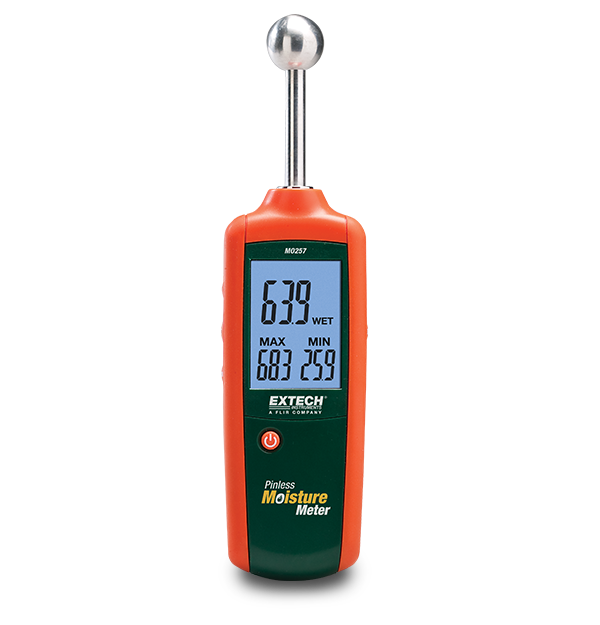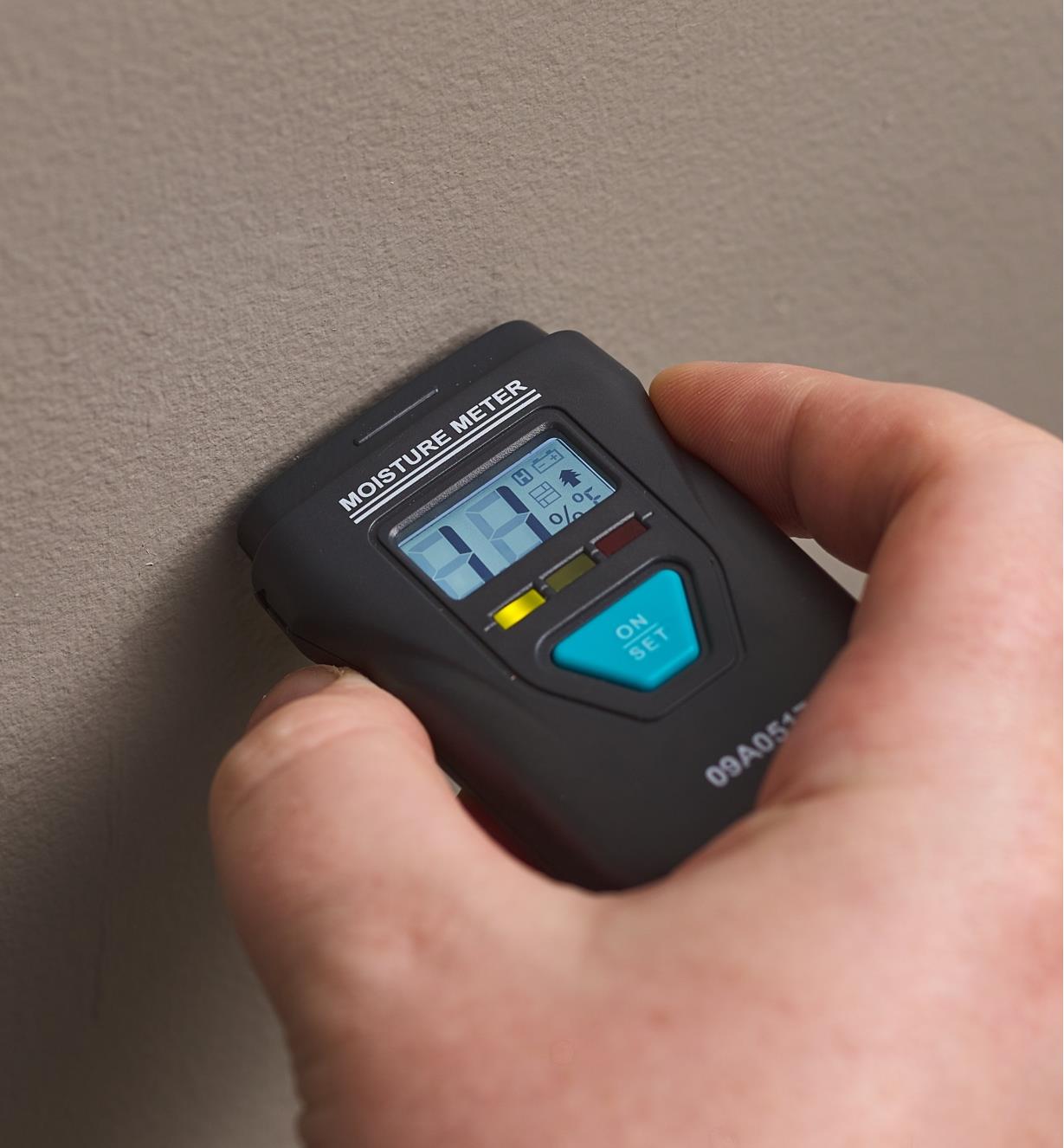Exactly How a Moisture Meter Can Enhance Your Building And Construction Jobs and Stop Damage
Exactly How a Moisture Meter Can Enhance Your Building And Construction Jobs and Stop Damage
Blog Article
Look Into the World of Moisture Meters: Everything You Need to Know
In the world of moisture meters exists a world of precision and functionality that commonly goes unnoticed. These devices, while apparently uncomplicated, hold a riches of information that can substantially influence different industries and applications. Understanding how moisture meters run, the different types readily available, and their diverse uses can lose light on their relevance in guaranteeing quality and efficiency. By exploring the intricacies of moisture meters, one can uncover a beneficial tool that goes beyond simple measurement, offering understandings that can make a significant distinction in numerous areas.
Just How Moisture Meters Work
Moisture meters operate by determining the electrical conductivity or capacitance of materials to identify the dampness material existing. These meters are indispensable devices throughout various sectors, consisting of construction, woodworking, and agriculture. By using various approaches such as pin-type or pinless technology, wetness meters supply exact analyses that aid experts make notified choices.
Pin-type dampness meters function by putting the sharp pins right into the material being checked. The electric conductivity between the pins is then gauged, with greater dampness degrees resulting in enhanced conductivity. Moisture Meter. On the other hand, pinless wetness meters utilize electromagnetic signals to check a bigger location without causing any damage to the material's surface area. These meters are ideal for quickly assessing moisture degrees in big areas or finished products.
No matter of the technique used, wetness meters play a critical duty in protecting against problems such as mold and mildew growth, structural damages, or item problems brought on by excess moisture. Understanding how these meters work is necessary for making certain the top quality and stability of materials in different applications.
Sorts Of Moisture Meters
Given the vital duty moisture meters play in various industries, it is vital to recognize the various kinds offered to specialists for properly evaluating wetness levels - Moisture Meter. There are mainly two major kinds of moisture meters: pin-type and pinless wetness meters

On the various other hand, pinless wetness meters use electro-magnetic sensor plates to scan a larger area of the product without causing any type of damage. This kind is ideal for promptly scanning big areas and is generally made use of for flooring, wall surfaces, and ceilings. Pinless meters are hassle-free for taking readings on finished surface areas without leaving any noticeable marks.
Both kinds of dampness meters have their benefits and are chosen based on the specific requirements of the work at hand. Recognizing the distinctions in between these kinds is critical for professionals to make accurate moisture assessments.
Applications Across Industries
Construction experts depend on moisture meters to examine the dampness levels in building materials like concrete, wood, and drywall, which is vital for maintaining architectural integrity and preventing concerns like rot or mold and mildew. The floor covering sector makes use of moisture meters to measure the wetness web content in subfloors before setting up numerous flooring treatments, avoiding costly problems due to excess dampness. In the food sector, wetness meters are More Bonuses made use of to keep an eye on and control moisture degrees in products such as grains, nuts, and dried fruits to maintain quality and quality.
Tips for Using Wetness Meters
Use the moisture meter's calibration setups to guarantee accurate readings when gauging the moisture why not look here material in different products. Calibration is important for the proper performance of a wetness meter. Prior to each use, it is recommended to inspect and change the calibration setups according to the certain product being evaluated. Furthermore, make certain the meter is readied to the correct dampness array for the material you are determining to acquire the most accurate results.
When utilizing a pin-type moisture meter, put the pins to the suitable deepness recommended for the product being examined. This makes certain that the wetness analyses are drawn from the proper depth within the material, offering an extra precise depiction of its dampness content. For pinless moisture meters, remember to maintain appropriate call with the product's surface to obtain trusted analyses.
Consistently check and change the batteries in your moisture meter to protect against inaccurate readings because of reduced power. Store the meter in a completely dry and you can try here secure area when not in usage to extend its life-span and keep its precision. By complying with these ideas, you can maximize the efficiency of your dampness meter and get precise dampness material measurements throughout different products.
Maintenance and Calibration
To make certain the precision of dampness material dimensions, routine upkeep and calibration of the wetness meter are vital actions in its correct functioning. Upkeep entails maintaining the wetness meter clean and cost-free from particles that can influence its readings. It is essential to comply with the producer's standards for cleaning to stop damage to the gadget. Additionally, normal calibration is necessary to verify the precision of the readings. Calibration readjusts the moisture meter to make sure that it offers consistent and trusted results.
Calibration must be performed regularly, especially if the dampness meter is used often or in critical applications where accurate dimensions are required. Numerous dampness meters include calibration tools or can be calibrated by expert solutions. Moisture Meter. It is recommended to keep a log of calibration days and results to track the performance of the dampness meter gradually. By adjusting the moisture and keeping meter on a regular basis, individuals can trust the precision of the dampness web content dimensions obtained.
Final Thought

To conclude, dampness meters play a vital function in various markets by properly measuring the wetness web content of materials. Understanding just how these tools function, the different types available, and proper upkeep and calibration are essential for obtaining reputable results. Whether in building, manufacturing, or agriculture, the usage of wetness meters helps guarantee quality control and efficiency in procedures.

In verdict, moisture meters play an essential duty in different industries by accurately measuring the dampness material of products.
Report this page